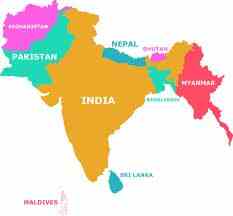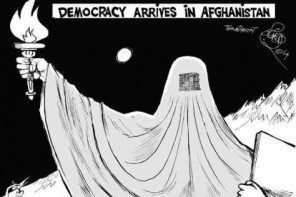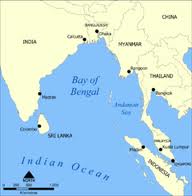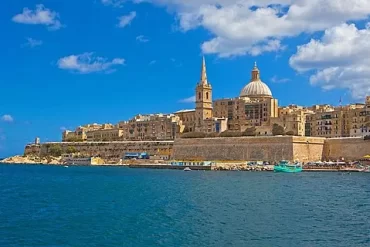UNSC Resolution 1540 national reports of South Asian countries
 This report is part of a collection examining implementation of United Nations Security Council Resolution 1540 (South Asia 1540) , which requires all states to implement measures aimed at preventing non-state actors from acquiring NBC weapons, related materials, and their means of delivery. It details implementation efforts in South Asia 1540 to-date.REGIONAL OVERVIEW
This report is part of a collection examining implementation of United Nations Security Council Resolution 1540 (South Asia 1540) , which requires all states to implement measures aimed at preventing non-state actors from acquiring NBC weapons, related materials, and their means of delivery. It details implementation efforts in South Asia 1540 to-date.REGIONAL OVERVIEWAll eight countries in South Asia have submitted 1540 national reports, with varying degree of compliance.[1] Although India and Pakistan have submitted reports with substantive information, the countries’ implementation of UNSCR 1540 obligations and enforcement of export control laws differ. Reports from Bangladesh, Nepal, and Sri Lanka provide insufficient information to analyze the effective and/or full implementation of the resolution’s obligations. In general, the reports from Bangladesh, Nepal, and Sri Lanka do not directly address national laws that safeguard WMD materials and prevent their transfer to non-state actors. However, in adherence to the 1540 Committee’s request, these nations do describe their national laws pertaining to border control and export controls.South Asia’s characteristic feature is the wide disparities within various segments of its economic growth and development, societal composition, scientific capabilities, and governance. Although the region has witnessed moderate to high economic growth, widespread regional disparities shadow the recent economic progress. A major concern is the ongoing political turmoil in the region and various domestic security challenges within the countries.
NBC Capabilities and Security
South Asia has advanced capabilities in research and production of NBC-related material. Three countries — Bangladesh, India, and Pakistan — have facilities and materials that present a proliferation risk (South Asia 1540). India has extensive expertise and facilities in research, development, and manufacture of NBC-related material. India possesses notable quantities of fissile material and has both enrichment and reprocessing facilities. India conducted a “peaceful nuclear explosion” in 1974, though it did not weaponize the nuclear device. In May 1998, India conducted two rounds of nuclear tests, declaring its possession of nuclear weapons. India’s nuclear weapons are deliverable by aircraft or short- and medium-range ballistic missiles. It is also developing a triad deterrent of air-, land- and sea-based nuclear forces. Reports indicate that India has produced 700 kg of weapons grade plutonium[2], and New Delhi is also strengthening its nuclear delivery systems, especially its missile forces.[3] It is estimated that India currently possesses between 60-80 nuclear warheads, and may have thermonuclear weapon capabilities.[4] A survey of India’s civilian research facilities and industries (especially chemical, pharmaceuticals, and biotechnology) reveals the country’s latent capabilities in chemical and biological areas. India is a member of both CWC and the BWC, and in 2009, it became the third nation to verifiably destroy its declared chemical weapons arsenal and associated facilities under the provisions of CWC.[5]
Shortly following India’s nuclear weapons tests in 1998, Pakistan conducted two rounds of nuclear weapons tests of its own. Pakistan’s nuclear arsenal is believed to consist of at least 70 warheads.[6] The country has produced enough fissile material for up to 90 warheads.[7] Recent evidence suggests that Pakistan is expanding its infrastructure for the production of fissile material in order to expand its arsenal[8]. The revelation of the A.Q. Khan proliferation network in 2003-2004 has increased international scrutiny of the safety and security of Pakistan’s nuclear arsenal.
Subsequently, Pakistan has made efforts to further tighten the command and control of its nuclear weapons, as well as strengthen its export control mechanisms.
Furthermore, Pakistan’s nuclear facilities are threatened by escalating terrorist activity in the country. In 2007-2009, at least three attacks on facilities associated with Pakistan’s nuclear weapons program were reported. Some of these facilities, such as a major air force base that was attacked, have both nuclear and conventional military functions.[9]
Another issue of critical importance in this region is the escalating nuclear-capable missile race between Pakistan and India. Both countries have devoted substantial resources to the development of several variants of ballistic missile systems that are being tested regularly.[10] In March 2011, both countries conducted test launches of nuclear-capable short-range ballistic missiles.[11] Pakistan has substantial research and manufacturing facilities to support its nuclear weapon and missile programs. In addition, Islamabad has a well-developed industrial base that could possibly support chemical and biological weapons programs. However, it is not known to have had offensive chemical or biological warfare programs and is a member of both CWC and BWC.
Although Bangladesh does not have nuclear power reactors, it has a light-water research reactor. Bangladesh has also expressed an interest in establishing a civilian nuclear program.[12] According to the Bangladesh Atomic Energy Commission, future plans for nuclear energy include the addition of two medium-sized nuclear power plants by the year 2017.[13]
There are currently 23 nuclear reactors in operation in South Asia, while another 26 are either in the planning or construction phases. Out of the operating reactors, two are pressurized water reactors, 19 are pressurized heavy water reactors and two are boiling water reactors.[14] India is also constructing the sub-continent’s first fast-breeder reactor.[15] Although uranium reserves in South Asia are quite scarce, India is estimated to hold 1.5% of identified global uranium resources.[16] India also possesses approximately 12% of identified global resources of thorium, which can potentially also be used for production of nuclear fuel.[17]
Export Controls and Border Controls
Export controls are of crucial importance in South Asia not only because of the presence of sensitive technologies in India and Pakistan, but also because of the region’s geographical proximity to major transshipment hubs and sea lines of communication stretching from the Strait of Hormuz to the Malacca Straits. Almost 60% of the world’s sea-borne trade and energy resources are transported through these strategic bottlenecks.
In August 2008, the Board of Governors of the IAEA approved the Indian safeguards agreement and on September 6, 2008, the NSG approved India’s exemption from the group’s ban on nuclear trade with nations outside of the NPT regime, two key steps towards finalization of the Indo-U.S. nuclear agreement. In October 2008, the United States Congress approved the ‘123’ agreement (nuclear cooperation), which was then signed into law by President George W. Bush. Russia and France also concluded bilateral nuclear cooperation agreements with India, which include the export of power reactors.[18] In January 2009, Kazakhstan signed a cooperation agreement on the supply of natural uranium to India.[19]
Russian-Indian nuclear cooperation dates back to the 1970s, when India’s nuclear test prompted Canada and the United States to terminate nuclear commerce with New Delhi. In 1976, Russia began supplying heavy water to India for its CANDU reactors, and in 1988 committed to the construction of two 1,000 MW reactors, though the deal was not finalized until 2001.[20] While India is not part of any export control regime and domestic enforcement of its laws and regulations governing WMD-related materials are problematic, it incorporated the entire NSG and MTCR control lists into its legislation and put in place a range of laws and regulations to strengthen domestic export controls.[21]
In recent years, several incidents of diversion and theft of nuclear material have raised doubts about India’s nuclear security standards. Since 2001, there have reportedly been 16 incidents of loss, theft or misplacement of radioactive sources across India.[22] Several incidents of smuggling of nuclear material along India’s Eastern borders with Burma and Bangladesh have raised fears of India becoming a hub for illicit trafficking in nuclear materials.[23]
Following the revelation of the A.Q. Khan nuclear proliferation network, Pakistan has made efforts to strengthen its export control laws and enforcement. For instance, Pakistan has enacted legislation aimed at ensuring the nonproliferation of nuclear, biological, and chemical weapons, such as the Export Control Act on Goods, Technologies, Material and Equipment related to Nuclear and Biological Weapons and their Delivery Means in 2004. The act called for the establishment of an oversight board to administer export control guidelines, licensing of controlled goods, and enforcement. However, implementation proceeded slowly. Pakistan established the oversight board only in 2007. Not until 2009 did Pakistan establish the rules and regulations called for in the 2004 legislation.
While only minimal concern exists over Bangladeshi nuclear activities and Bangladesh is a strong supporter of nuclear disarmament, there have been several instances of illicit trafficking of radioactive materials in or around the borders of Bangladesh. In one case, Bangladeshi police officers reportedly discovered a container of uranium in the home of a former government official.[24] In another instance, in 2003, police in Bangladesh recovered 225 grams of uranium oxide from members of Jamaat-ul-Mujahideen, a militant group based in that country.[25] This has added to the concern that Bangladesh may serve as a transit point for illicit nuclear materials en route to Pakistan or India. Bangladesh produces large amounts of radioactive scrap metal in the country’s 24 ship breaking yards.[26] In recent years, there were several incidents of attempted theft and diversion of radioactive materials produced in the yards, some of which were prevented by Bangladeshi authorities.[27]
In South Asia, there are a number of factors that hamper the implementation of effective border and export controls required by UNSCR 1540. These difficulties include disputed international borders, lack of information sharing among countries, lackadaisical interagency coordination within nations, inadequately trained personnel, and the “developing” stage of many domestic industries, which lack technical and financial resources to implement effective export controls and end-user verifications.[28]
Internal Security and Terrorist Threats
Pakistan has witnessed an increase in the frequency and intensity of terrorist violence, reemergence of a separatist movement in Baluchistan, and resurgence of Al-Qaeda affiliated groups in North West Frontier and Federally Administered Tribal Areas. Furthermore, Pakistan has been affected by the ongoing war in Afghanistan. In 2008, the country elected a parliament and president through a popular vote following a protracted period of authoritarian governance under a state of emergency and martial law. However, societal conditions are far from stable and peaceful in view of growing political divisions within the coalition government and increasing activities of extremists and terrorist groups within the society and on the borders. Over the course of the last decade, thousands of civilians have died in an unrelenting campaign of terrorist attacks against the Pakistani state. Several officials have fallen victims to the sectarian violence.[29] This sort of political unrest may result in the Pakistani government’s inability to sufficiently safeguard its nuclear arsenal and other WMD-related materials and technologies.
India is one of the most terrorism-affected countries in the world with almost 2,300 lives lost in 2007 as a result of various terror-related incidents. In November 2008, 164 people were killed in the devastating Mumbai attacks, a series of shooting and bombing attacks that lasted for three days.[30] The government and the security forces’ efforts to curtail terrorist activities are hampered by outdated and overburdened law enforcement and legal systems. India faces threats from various groups, and in recent years, terrorist incidents have increasingly involved domestic terrorist cells and a higher degree of linkage across insurgent and militant outfits.[31] Also, despite a rise in the standard of living and relatively stable political conditions in India, the country faces significant security challenges from illegal cross-border trade and migration, terrorist attacks in major Indian cities, insurgencies in Northeastern states, and leftist extremism (Naxalites) in nearly half of the 28 Indian states.[32] These factors have exhausted the security agencies and weakened border controls. Moreover, all South Asian countries have various border disputes with their neighbors, hampering effective border management.
The authority of Hamid Karzai’s government in Afghanistan appears to be restricted mainly to Kabul amidst increasing attacks by the Taliban and the continued influence of warlords and their militias in various provinces.[33] The governmental institutions and the national army are still in their infancy and depend on the backing of the international community, especially NATO and other international forces that number about 140,000 in total.[34] U.S. President Barack Obama announced in December 2009 that U.S. forces would begin withdrawing from the country by July 2011. This precarious situation coupled with the resurgence of Taliban and Al-Qaeda, steady increase in drug trafficking, and inadequate border controls and weak law enforcement, make Afghanistan a safe-haven for terrorists and illicit transshipment activities. Governance is made even more difficult by the suspected involvement of Pakistani government entities, especially elements of the Inter-Services Intelligence (ISI), in fomenting violence in Afghanistan.[35]
REGIONAL ADHERENCE TO NONPROLIFERATION INSTRUMENTS AND ORGANIZATIONS
In terms of percentage participation in international nonproliferation treaties and terrorism conventions, South Asia shows moderate success: all states submitted 1540 reports; only India and Pakistan have not joined the NPT; all ratified or signed the CWC and the BTWC; and the three countries with nuclear facilities — Bangladesh, India, Pakistan — ratified the CPPNM and the CNS. However, national reports and treaty ratifications cannot be the sole benchmarks for evaluating progress in meeting UNSCR 1540 requirements. The two major countries in the region—India and Pakistan—are still outside the global nuclear nonproliferation regime. As a result of the US-India nuclear deal, on August 1, 2008, the IAEA approved a specific nuclear safeguards agreement with India, which envisions application of IAEA safeguards to Indian nuclear facilities designated by the country as civilian. The Nuclear Suppliers Group on September 6, 2008 agreed to exempt India from its guidelines that require comprehensive safeguards as a condition of nuclear commerce. India, therefore, is not subject to comprehensive nuclear safeguards, nor has it signed the Additional Protocol to its specific safeguards agreement approved by the IAEA Board of Governors in March 2009.[36]
Even the countries that are part of various treaties and conventions have weak domestic law enforcement agencies, limited resources, and inadequate border controls; thus jeopardizing implementation of their treaty obligations. Another serious concern is that India and Pakistan, in spite of their NBC scientific capabilities and facilities, are not members of any of the export control regimes, in particular the NSG and AG, although India has indicated its desire to join the NSG, MTCR, the Australia Group and the Wassenaar Arrangement.[37]
Regional Organizations and Co-operation
Various regional and international organizations have conducted outreach activities to facilitate the effective and universal implementation of UNSCR 1540 obligations. In the case of South Asia, the IAEA conducts regular workshops and training programs on nuclear topics. In 2010, the Organization for the Prohibition of Chemical Weapons organized a training workshop for customs officials from 17 states parties to the convention (Bangladesh, Bhutan, Cambodia, India, Indonesia, Iran, Lao PDR, Malaysia, Maldives, Pakistan, Philippines, Republic of Korea, Saudi Arabia, Singapore, Sri Lanka, Thailand and Viet Nam) and one non-state party (Myanmar).
The workshop included training on the technical aspects of controlling transfers, such as identification of relevant chemicals, information on laboratory and customs related matters, as well as software for customs services, risk assessment, and monitoring transshipments. In addition, the U.S. Department of State is implementing the Export Control and Related Border Security Assistance (EXBS) program, which is an interagency program aimed at assisting foreign governments in establishing export control mechanisms that meet international standards.
REGIONAL ACTIVITIES
• OPCW, Sub-regional Workshop for Customs Authorities in South Asia on Technical Aspects of the Transfers Regime, Malacca, Malaysia, 17 September — 1 October, 2010
• IAEA, National Training Course on Physical Protection of Nuclear Facilities and Materials, Mumbai, India, April 6-17, 2009.
• Industry Outreach in Bangalore and Chennai, India, organized by the U.S. Department of Energy, Federation of Indian Chambers of Commerce & Industry, and Center for International Trade and Security, “Promoting Technology-embedded Trade Cooperation: Explaining Indian and International Strategic Trade Regulations,” May 2008
• IAEA, National Training Course on Physical Protection of Nuclear Facilities and Materials, Islamabad, Pakistan, November 5-16, 2007
• IAEA, Response to Illicit Trafficking Incidents Involving Nuclear and other Radioactive Materials, Mumbai, India, August 6-10, 2007
• IAEA, Regional Seminar on Advanced Detection Equipment, Mumbai, India, July 30-August 3, 2007
• IAEA, Regional Training on Physical Protection of Nuclear Material and Facilities, Mumbai, India, April 16-27, 2007
• IAEA, International Nuclear Safety Group, Mumbai, India, March 13-15, 2007
• IAEA, Regional Training Course on the Physical Protection of Radioactive Sources, Mumbai, India, October 9-13, 2006
• OPCW, Sub-regional Workshop for Customs Authorities in South Asia on Technical Aspects of the Transfers Regime, Katmandu, Nepal, August 9-10, 2006
• Interpol, 17th Asian Regional Conference, Colombo, Sri Lanka, 18-22 February 2002
Source : Center for Nonproliferation Studies







